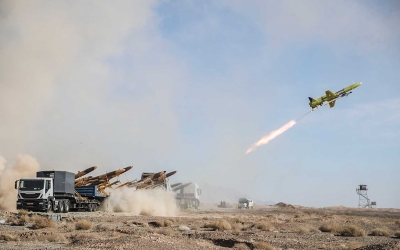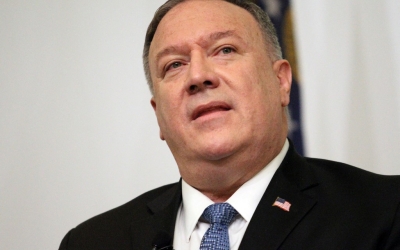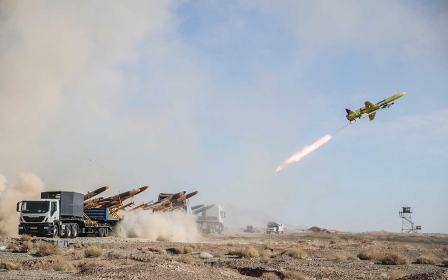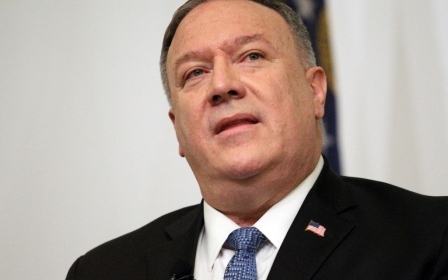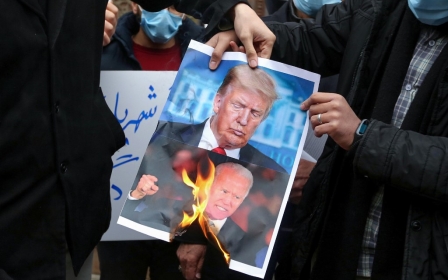Iran tests 'bomber drones' and missiles in third military exercise this month
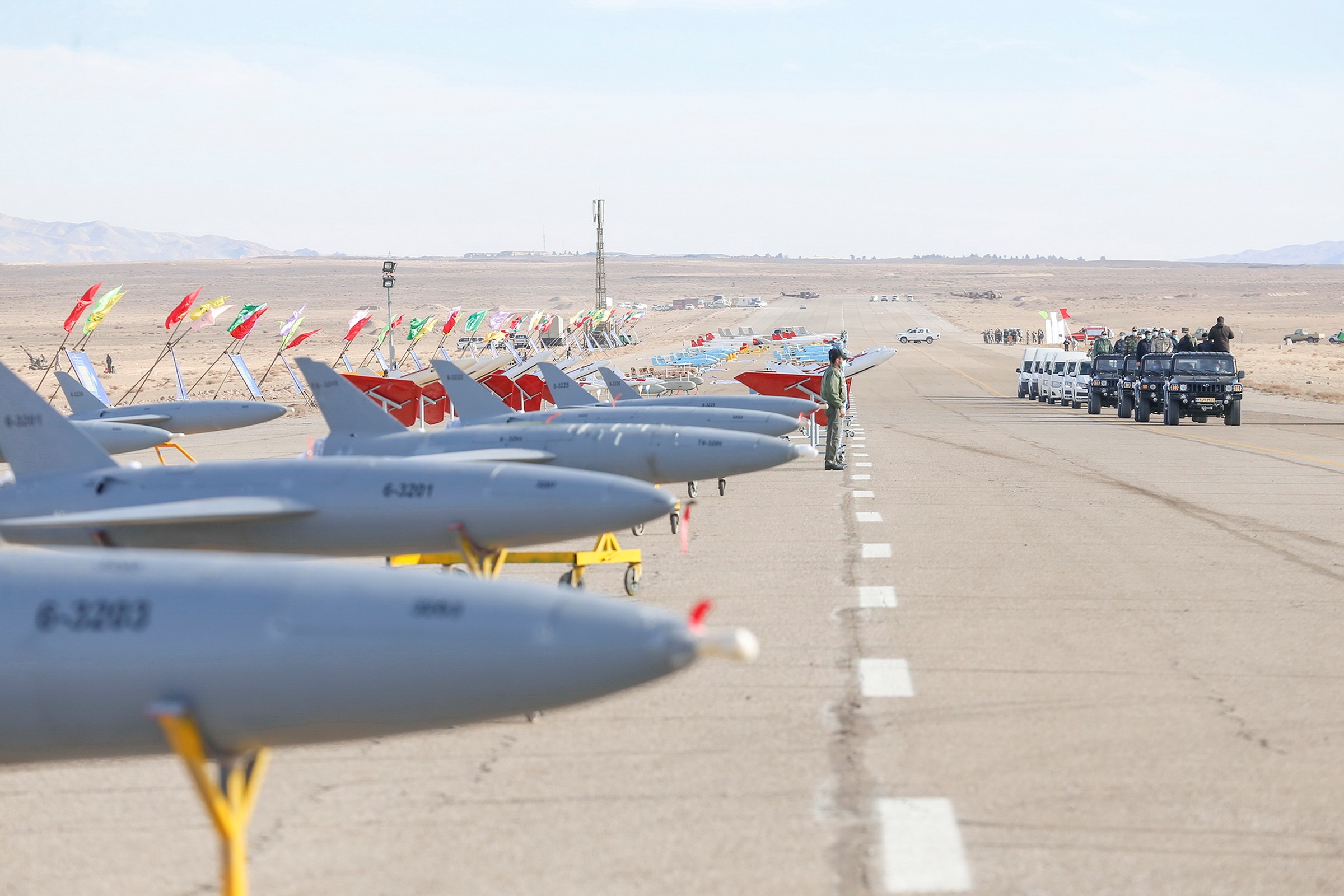
Iran's Islamic Revolutionary Guard Corps (IRGC) launched a drone and missile drill in central Iran on Friday, its official website reported, in the country's third military exercise in less than two weeks.
The moves come at a time of heightened tensions with the United States in the final days of US President Donald Trump's administration.
Dubbed the Great Prophet 15, Friday's drill featured a "new generation" of surface-to-surface ballistic missiles, according to the Sepahnews website.
The exercise involved a drone attack on a missile defence system followed by "a barrage of Zolfaghar, Zelzal and Dezful-class ballistic missiles," the site said.
According to the Guards, the missiles were "equipped with detachable warheads and capable of being controlled outside the atmosphere".
"The bomber drones struck the hypothetical enemy missile shield from all directions, completely destroying the targets," a state TV broadcast said of Friday's drill.
"Also, an abundant number of a new generation of ballistic missiles were fired at selected targets, inflicting deadly blows to the hypothetical enemy bases."
Reverse engineering
Iran, which routinely boasts of technological advances in its armed forces, has one of the biggest missile programmes in the Middle East, regarding them as a deterrent and retaliatory force against US and other adversaries in the event of war.
Iran has been quietly building up an arsenal of locally-produced drones that it is exporting to its allies in the region and testing against enemies in Iraq, Israel and Saudi Arabia, according to a report published in 2019 in The Hill, a US news website.
On 10 July 2019, Iranian drones were were used to attack a Kurdish dissident group in northern Iraq, after Iran accused the group of killing members of the Revolutionary Guard.
Iranian media said that a new IRGC drone unit was used during the attack, which came three weeks after Iran downed a sophisticated US drone over the Gulf of Oman.
Although Iran has sought to build up a force of locally produced drones since the 1980s, it made major strides after it was effectively able to reverse-engineer copies of US drones, The Hill reported.
The Iranian Saegheh and Shahed 171 are essentially copies of the Sentinel RQ-170 Iran captured in 2011, the website said.
'Enemies of Islam'
A video released by state television on Friday showed several missiles being launched in a desert area with Guard commander Major General Hossein Salami and the force's aerospace chief Amirali Hajizadeh present.
"The message of this drill was our power and determined will to defend our sovereignty, our sacred system and our values against the enemies of Islam and Iran," Salami was quoted as saying.
Hajizadeh said the operation demonstrated the Guard's "new power" and capabilities.
The drill follows an Iranian navy exercise held on Wednesday and Thursday in the Gulf of Oman, and an army drone drill on the fifth and sixth of January, AFP reported.
The exercises started two days after Iran marked the first anniversary of the assassination of its revered commander Qassem Soleimani, killed in a US drone strike in Iraq in January last year.
There have been periodic confrontations between Iran's military and US forces in the Gulf since 2018, when Trump abandoned Iran's 2015 nuclear deal with world powers and reinstated harsh sanctions against Tehran.
The US said it plans to announce additional Iran sanctions on Friday related to conventional arms and to the metals industry, sources familiar with the matter told Reuters.
The State and Treasury Departments did not immediately respond to requests for comment on the announcement.
US President-elect Joe Biden, who takes office on 20 January, has said Washington will rejoin the nuclear deal "if Iran resumes strict compliance" with the agreement that imposed tight curbs on its nuclear activities in return for the lifting of sanctions.
Middle East Eye propose une couverture et une analyse indépendantes et incomparables du Moyen-Orient, de l’Afrique du Nord et d’autres régions du monde. Pour en savoir plus sur la reprise de ce contenu et les frais qui s’appliquent, veuillez remplir ce formulaire [en anglais]. Pour en savoir plus sur MEE, cliquez ici [en anglais].


